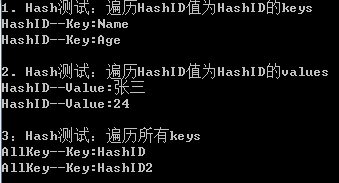Redis演示及使用场景
2015-08-11 18:24
525 查看
概述
Redis是一个开源的、使用C语言编写的、支持网络交互的、可基于内存也可持久化的Key-Value(字典, Remote Dictionary Server,远程字典服务器)数据库。客户端:http://redis.io/clients
命令:http://redis.io/commands http://redisdoc.com
.NET开发程序配置
ServiceStack.Common.dllServiceStack.Interfaces.dll
ServiceStack.Redis.dll
ServiceStack.Text.dll
程序配置Redis服务IP和端口
static RedisClient Redis = new RedisClient("192.168.100.118", 6379);双击运行:redis-server.exe

Redis Desktop Manager 介绍
Redis Desktop Manager(RedisDesktopManager,RDM)是一个快速、简单、支持跨平台的 Redis 桌面管理工具,基于 Qt 5开发(一个跨平台的C++图形用户界面应用程序框架),支持通过 SSH Tunnel 连接。下载地址:http://redisdesktop.com/download
配置Redis服务地址:

查看可视化keys的值:

C#操作5种基本数据类型
1. 字符串
A: 存储普通字符串,并设置过期时间int expireTime = 5000;// 5S
存储:client.Add<string>("StringKey","StringValue", DateTime.Now.AddMilliseconds(expireTime));
获取:client.Get<string>("StringKey"), DateTime.Now);
B: 存储类对象
Student stud = new Student() { id = "1000", name = "张三" };
存储:client.Add<Student>("StringEntity", stud);
获取:Student Get_stud = client.Get<Student>("StringEntity");
测试用例输出结果:

2. 哈希
存储: client.SetEntryInHash("HashID", "Name", "张三");A: 遍历HashID值为HashID的keys
获取:List<string> HaskKey = client.GetHashKeys("HashID");
B:遍历HashID值为HashID的values
获取:List<string> HaskValue = client.GetHashValues("HashID");
C:遍历所有keys
获取:List<string> AllKey = client.GetAllKeys();
测试用例输出结果:

3. 链表
A: 队列入队:client.EnqueueItemOnList("QueueListId",
"1");
出队:long q =
client.GetListCount("QueueListId");
client.DequeueItemFromList("QueueListId"));
B: 栈
入栈:client.PushItemToList("StackListId",
"1");
出栈:client.PopItemFromList("StackListId")
测试用例输出:

4. 无序集合
存储: client.AddItemToSet("SetA", "1");获取:HashSet<string> setA = client.GetAllItemsFromSet("SetA");
A:并集
HashSet<string> hashUnion = client.GetUnionFromSets(new string[] { "SetA", "SetB" });
B:交集
HashSet<string> intersectSet = client.GetIntersectFromSets(new string[] { "SetA", "SetB" });
C:差集
HashSet<string> setOfDiffSetAToSetB = client.GetDifferencesFromSet("SetA", new string[] { "SetB" });
测试用例输出:

5. 有序集合
存储:client.AddItemToSortedSet("SetSorted", "A");输出:List<string> listSetSorted = client.GetAllItemsFromSortedSet("SetSorted");
测试用例输出:

Redis应用场景
只是介绍我本人在使用Redis时用到的场景,仅个人观点。A.抢XXX赠券、抽奖系统的奖品库存,使用的Redis中的链表
前一天晚上通过定时服务推送奖品库存,使用LPUSH命令将乱序的奖品推入List中,抽奖时则调用LPOP命令,将最左侧奖品弹出队列,提示用户中奖。同时,发送异步消息,让消息去处理中奖纪录并插入关系型数据库中。好处:
出队操作速度极快,可以满足多人并发抽奖的场景。
使用了消息队列,避免了数据库并发操作。
B.某活动累计充值xxx元,奖励xxx。使用Redis中的string/hash(哈希)结构

用户每次充值,都发送一个充值MQ事件(使用RabbitMQ),另一个程序,消费充值MQ事件,将事件中的用户ID、充值金额分别存到Redis(string/hash)里面。
以后,就可以直接汇总用户总充值金额给满足条件的客户赠送奖品。
好处:
完全避免了关系性数据库的查询插入操作
Redis的查询速度非常快,提升了用户体验
扩展阅读
1. redis持久化RDB和AOF http://my.oschina.net/davehe/blog/1746622. Redis作者谈Redis应用场景 http://blog.nosqlfan.com/html/2235.html
3. Redis使用总结之与Memcached异同 /article/5439550.html
4. Redis内存使用优化与存储 http://www.infoq.com/cn/articles/tq-redis-memory-usage-optimization-storage
5. Redis学习手册(目录) /article/4700331.html
演示代码下载:http://download.csdn.net/detail/jys1216/8991915
相关文章推荐
- Redis字符串的巧妙处理
- Redis使用误区
- 谈谈陌陌争霸在数据库方面踩过的坑( Redis 篇)
- redis主从配置及主从切换
- Redis主从复制
- Redis监控方案
- Node.js 中使用 Redis 来实现定时任务
- 用 redis 实现和保护 12306
- Redis lua 常用脚本记录
- redis使用jmeter测试
- 详解Redis中的双链表结构
- Redis安装及使用介绍
- 超强、超详细Redis数据库入门教程
- 多台redis部署及同步
- Redis2.8 单个redis JedisPool 与spring的集成配置
- Redis学习笔记
- 基于Twemproxy的Redis集群方案
- 超强、超详细Redis入门教程
- RedisTemplate SerializationFailedException: Failed to deserialize payload 异常解决
- 初学Redis(2)——用Redis作为Mysql数据库的缓存
